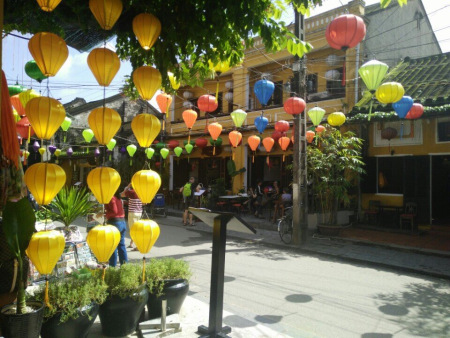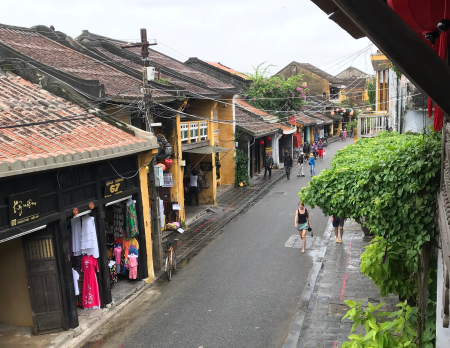50/50 MY SON – HOI AN











50/50 MY SON & HOI AN
My Son Sanctuary is located in Duy Phu commune, Duy Xuyen district, 20km west of Tra Kieu (also called Simhapura,the ancient capital of Cham people) and 50 km south-west of Da Nang city. It was an imperial city during the Cham dynasty. It used to be a site of religious ceremonies for kings of the ruling dynasties of Champa, as well as a burial place for Cham royalty and national heroes, between the 4th and 13th centuries.
My Son Sanctuary is a large complex of religious relics that comprises more than 70 architectural works. They include temples and towers connected to each other with complicated red brick designs. The main component of the Cham architectual design is tower, built to reflect the divinity of the king.
Through stone, steel and royal dynasties, My Son remained the most important holy area for the Cham people during that period. Over centuries, the Cham built Lip, a linked architectural complex, with baked brick and sandstone. The main temple worship the Linga- Yoni, who represents the capability of invention. Next to the main tower (kalan) are several sub-towers worshipping genies or deceased kings.
My Son was forgotten for hundreds of years. In 1898, this holy land was explored by a French scholar, and resorted from 1937 to 1944 by EcoleFrancaised’Extreme Orient
Although time and the war have destroyed some towers, the remaining sculptural and architectural remnants still reflect the style and history of the art of the Cham people. Many artifacts were taken to France, while others are well preserved in My Son’s own museum and also displayed in The Champa Museum in Da Nang. The masterpieces mark a glorious time for the architecture and culture of the Cham, as well as of the Southeast Asia.
My Son was recognized as a World Cultural Heritage Site in 1999.
* Pick up from your hotel, drive to My Son Sanctuary (1 hour)
*A short buggy ride from the entrance gate to enjoy a short culture show of Champa songs and dance performed by Champa who are still a minority in Viet Nam
*Guided walk around the site.
*Return back to Hoi An Old Town and have lunch
In the afternoon, we continue to discovery the old town
HOI AN CITY WALKING TOUR
For centuries Hoi An was an important meeting place of many cultures, such as Champa, Vietnamese, Portuguese, Japanese and Chinese, and has been greatly impacted by Vietnamese and Chinese civilization.
The town used to harbor foreign traders back in the 17-18th centuries, and it was an important heavily-frequented trading port in Southeast Asia. It was the busiest trading port in Dang Trong region of Vietnam during the reign of Nguyen as merchants often stopped to exchange and purchase commodities. Some of them came and went, but many settled in permanently and left their marks in the history of Hoi An. As the only traditional port typical of Southeast Asia in Vietnam, Hoi An has preserved many architectural buildings such as houses, assembly halls, communal houses, pagodas and temples that bear its very unique mark. Apart from cultural values reflected by architectural buildings, Hoi An has kept a vibrant culture with intangible heritage. Everything in the ancient town, from daily life of the locals to traditions, customs and religious practices has been preserved and promoted well. That’s why Hoi An is called a living museum of architecture and way of city life.
In 1999, UNESCO formally recognized Hoi An as a World Heritage Site The ancient town is the best place for foreign tourists who want to understand and learn more about the lives, tradition and customs that people in distant feudalistic period had. Besides, a lot of handicrafts, souvenirs and top quality handmade clothes are also offered in Hoi An. A really good chance to bring back home the most beautiful gifts ultimately reflecting Vietnamese culture, identity and uniqueness from a memorable trip to a fascinating destination.
End of the tour and back your hotel
